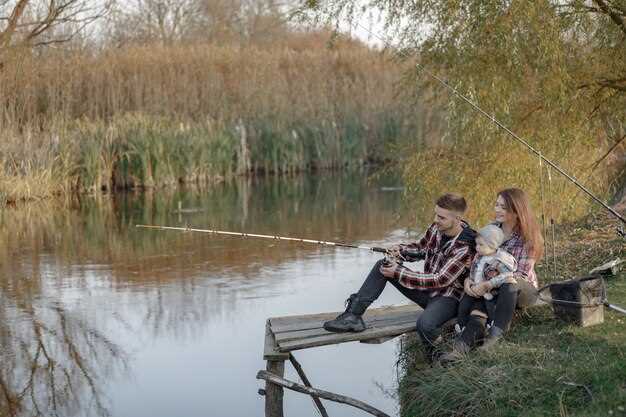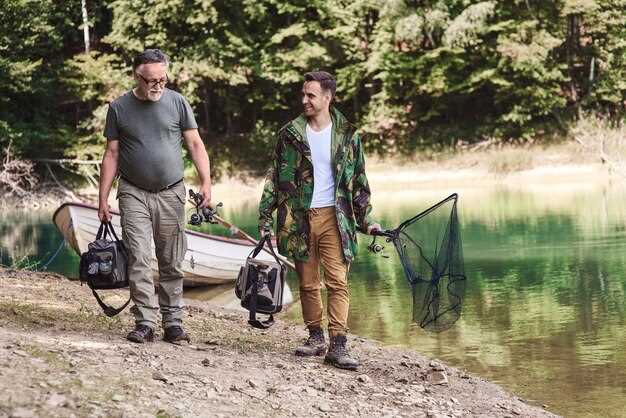
Embarking on an outdoor adventure that combines fishing and hiking can be an exhilarating way to connect with nature. As you traverse scenic trails and cast your line into tranquil waters, the dual experience offers a unique opportunity for relaxation and enjoyment. However, proper preparation is essential for a successful outing that ensures both your safety and the fulfillment of your outdoor goals.
When planning a trip that involves this exciting combo, it is crucial to understand the best practices for both activities. Knowledge about local fishing regulations, the best times to fish, and the types of bait or lures to use will enhance your chances of a successful catch. Simultaneously, selecting the right hiking gear, understanding trail conditions, and staying aware of your surroundings will ensure your journey on foot is safe and enjoyable.
In this article, we will explore essential tips for fishing and hiking, offering insights that will gear you up for a memorable outdoor experience. Whether you are a seasoned angler or a novice hiker, our advice will help you navigate through the beautiful landscapes and plentiful waters awaiting your exploration.
Choosing the Right Fishing Combo for Your Trip

When planning your outdoor adventure, selecting the right fishing combo is essential for a successful experience. A fishing combo typically includes a fishing rod and reel paired together, designed to work cohesively. Understanding your target species and the fishing environment will guide you in making the best choice.
1. Consider Your Target Species: Different fish require different tackle. For instance, if you’re aiming for larger freshwater species like bass or pike, a medium to heavy combo with a sturdy rod is recommended. On the other hand, if you’re targeting delicate species such as trout, opt for a lighter setup that offers more sensitivity.
2. Match Your Fishing Technique: The fishing method you plan to use greatly influences your combo selection. For spin fishing, look for a spinning combo; for baitcasting, choose a baitcasting combo. Fly fishing requires specialized rods and reels designed for casting lightweight flies. Each technique has its specific requirements, making compatibility vital.
3. Check the Rod Length: Rod length impacts casting distance and control. Longer rods provide greater casting distance, beneficial for open waters, while shorter rods offer more control in tight spaces, such as rivers or streams. Choose a length that fits your fishing location and style.
4. Assess the Reel Size: The reel should match the rod and target fish. A larger reel accommodates heavier lines and bigger fish, while smaller reels work best with lighter lines. Ensure that the reel’s drag system is reliable and suits the fish you intend to catch.
5. Budget and Quality: Your budget plays a significant role in combo selection. While affordable combos are available, investing in a higher-quality setup typically yields better performance and durability. Look for reputable brands with positive reviews, focusing on materials that withstand outdoor conditions.
Choosing the right fishing combo can enhance your overall experience, ensuring you’re well-prepared for your fishing adventure. Keep these factors in mind to make an informed decision that aligns with your fishing goals.
Essential Gear for a Successful Hiking Experience
When planning a hiking adventure, it’s crucial to equip yourself with the right gear to ensure a safe and enjoyable experience. A sturdy pair of hiking boots is fundamental; they provide the necessary support and traction on various terrains. Additionally, moisture-wicking socks can help prevent blisters and keep your feet comfortable throughout the trek.
A well-fitted backpack is another essential item, allowing you to carry your supplies efficiently. Look for one with adjustable straps and sufficient storage compartments to keep your gear organized. Inside, pack essentials like a first aid kit, multi-tool, and a reliable navigation system, such as a map or GPS device, to help you stay oriented on your journey.
Hydration is vital while hiking, so carrying a quality water bottle or hydration bladder is necessary. Aim for at least two liters of water, depending on the length of your hike and the weather conditions. In addition, consider bringing snacks that provide energy, such as trail mix, energy bars, or jerky.
If you’re planning to combine fishing with your hike, a lightweight fishing combo is essential. Ensure your fishing rod is portable and easy to store in your backpack. Don’t forget to pack your fishing license, bait, and tackle, as these will enhance your experience at nearby bodies of water.
Lastly, dressing in layers can help you adapt to changing weather conditions. A moisture-wicking base layer, insulating mid-layer, and waterproof outer layer can keep you comfortable in various temperatures and wet conditions. Sun protection, including hats and sunscreen, is equally important to shield against UV rays during prolonged outdoor exposure.
Best Practices for Combining Fishing and Hiking Routes

Combining fishing with hiking can create a fantastic outdoor adventure, allowing you to enjoy the beauty of nature while also pursuing your angling interests. Here are some best practices to ensure a successful and enjoyable combo experience:
- Plan Your Route:
- Research trails that are known for being near popular fishing spots.
- Look for maps that indicate water bodies accessible by foot.
- Check for any regulations regarding fishing in specific areas.
- Gear Considerations:
- Choose lightweight and portable fishing gear to easily carry on hikes.
- Consider using multipurpose rods that can easily break down and fit in your backpack.
- Pack only essential tackle to minimize weight and bulk.
- Timing Is Key:
- Plan your hike during optimal fishing hours, typically early morning or late afternoon.
- Keep in mind weather conditions as they can impact both hiking and fishing.
- Hike to your fishing spot during cooler parts of the day for a more pleasant experience.
- Stay Hydrated and Nourished:
- Bring enough water for both hiking and fishing periods.
- Pack light snacks to maintain energy during your combo adventure.
- Consider portable food options suitable for a day outdoors.
- Respect Nature:
- Follow the principles of Leave No Trace to protect natural habitats.
- Catch and release if local regulations or conservation efforts suggest it.
- Be mindful of wildlife, keeping a respectful distance as necessary.
- Safety First:
- Inform someone about your planned route and expected return time.
- Carry a basic first aid kit, as both hiking and fishing can present hazards.
- Always check the weather forecast before heading out to avoid unexpected conditions.
By following these best practices for combining fishing and hiking, you can maximize your enjoyment and ensure a safer, more fulfilling outdoor adventure.



